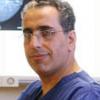Tassia Haines, 28, from Port Talbot, Wales, was diagnosed with secondary breast cancer earlier this year, after having breast cancer in 2016.
She has spoken out about how patients with secondary breast cancer, which is terminal, have been left feeling side-lined and ignored by large charities, despite big campaigns such as Breast Cancer Awareness Month.
Commenting on the lack coverage of women with a terminal diagnosis, Tassia said:
Secondary Breast Cancer should dominate at least a third of breast cancer related content going out. That might generate more concern, urgency and anger in people and actually put pressure in the right places to get this moving.
Tassia told the Mail: 'Being a young woman with this condition can be tough. It's a shock knowing I don't have much time left. The median survival rate for secondary breast cancer is two to three years. When people look at me, I can see real pity in their eyes. It can feel like people are watching and waiting for you to die.'
Secondary breast cancer, also known as metastatic, advanced or stage 4, describes cancer which has spread beyond the breast and nearby lymph nodes to other parts of the body, usually, but not exclusively spreads to the bones, lungs, liver or brain. There is no cure, but certain treatments can extend life.
The outdoor activity instructor, who is engaged to married, added:
I am stunned at the lack of urgency in finding new treatments. Cancer Research UK are making around £634 million in a year and they have yet to find an alternative to chemotherapy, which can be barbaric. Breast Cancer Now say they aim to make secondary breast cancer chronic by 2050. That is far too slow, and they are not transparent in their goals or pathway.
Patients like Tassia have joined METUPUK, the only patient advocacy group in the UK to look after the interests of those with secondary/metastatic breast cancer.
Founder Jo Taylor, 51, said 'Every day, 31 women die from secondary breast cancer. Between 20-30% of those diagnosed with primary breast cancer will develop secondary cancer. The UK currently has the lowest five-year survival rate for breast cancer in comparison to all other European countries of a similar wealth.'
The emphasis on self-checking lumps is not always helpful, in Jo’s opinion: 'Women are not been give the information they need to understand if they have developed secondary breast cancer. Around 6% of patients already have developed secondary breast cancer at diagnosis. These are not necessarily lumps in the breast. We are sold a lie that self-checking will always save our lives.'
METUPUK are campaigning for
- Awareness and education
- Better treatment and care
- More research and access to drugs
Jo commented: 'Certain drugs are only funded for particular stages of treatment within the NHS. There has been an explosion of Go Fund Me for treatment, because the NHS don’t support patients enough. I know cases where patients who have to pay over three thousand pounds every three weeks even though the medication may be available on the NHS – but because they have had another drug, they are not applicable.'
Part of METUPUK’s remit is to champion patients with the condition, who often feel stigmatised by the secondary diagnosis.
Sometimes I feel that because I haven’t ‘won the fight’ others believe I didn’t check hard enough, or did something wrong. Some women who have primary breast cancer don’t want to hear about the statistics and the experiences of those with secondary breast cancer. They are more upset about the potential of their worst fears, rather than thinking about the feelings of those who are dying. Ironically, by silencing their voices, they are hindering their own chances in future, as we are fighting for them. We will probably not live long enough to benefit from our campaigning.
Tassia Haines.
Key facts
- There is no cure for secondary breast cancer. However, there are treatments that reduce the size and number of active tumours in the body.
- Sometimes patients respond so well to treatments that no cancer is detectable in the body using scans. This is called No Evidence of Active Disease – NEAD.
- Other people still have cancer detectable, but it is stable and not growing.
- The median survival for a patient is two to three years, a small number of patients are 'outliers' – living many years after an initial diagnosis.
- More than 11% of women diagnosed between 2000-2004 younger than 64 lived for 10 years or more.
The ‘red flag symptoms’
A small number of secondary breast cancer cases are de novo – meaning the lump is found when previously undiagnosed breast cancer cells have spread to the other parts of the body such as the bones, lungs or liver. Most cases of secondary breast cancer occur when women have already had a primary diagnosis, sometimes years before.
People who have had breast cancer need to be aware of certain symptoms, as this may indicate the cancer has metastasised and they will need treatment for secondary breast cancer to extend their lives. However, it’s important to note symptoms are similar to other conditions, but if you have an unexplained ailment which is persistent and continues over a few weeks, you should contact your GP or your oncologist or breast cancer nurse.
These may include:
- Feeling constantly tired
- Constant nausea (feeling sick)
- Unexplained weight loss and loss of appetite
- Aching bones
- Breathlessness and cough that doesn’t go away
- Headaches and dizziness
Find out more about METUPUK here.
Tassia blogs and publishes cartoons about her experiences at Pink is not my colour.









